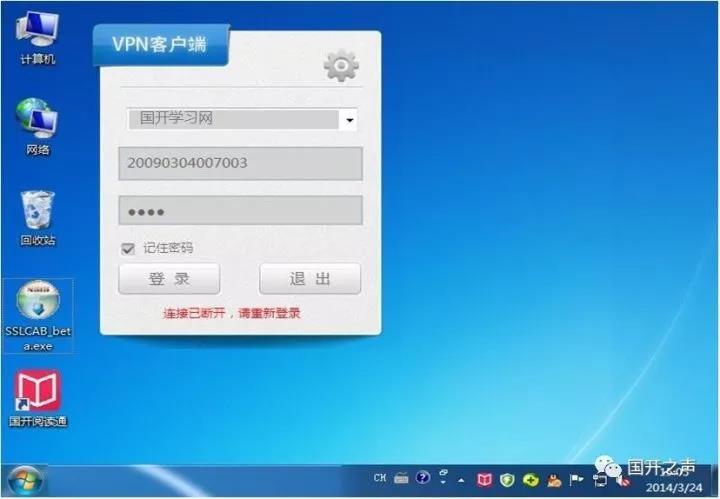 On an ordinary spring day in 2013, Zhang Hongli received a call from a colleague from Beiling Campus of Shenyang RTVU, asking her whether or not the OUC digital library's resources were available for free. The caller was full of both excitement and doubt. After receiving the affirmative answer, the pleased tutor exclaimed, "This is really great!"
On an ordinary spring day in 2013, Zhang Hongli received a call from a colleague from Beiling Campus of Shenyang RTVU, asking her whether or not the OUC digital library's resources were available for free. The caller was full of both excitement and doubt. After receiving the affirmative answer, the pleased tutor exclaimed, "This is really great!"
Since 2012, the OUC digital library’s resources and services have been open to all students and teaching staff across the school system. Today, the literature resource system that represents the essence of the OUC, and that combines discipline and regional features, has its basic shape. The system covers every discipline that involves existing academic education majors. The digital library, the OUC learning website, and office platform are also unified. By leveraging the digital library’s open platform, "OUC Reading," a mobile library, and other information systems, the OUC provides digital library services to 4 million students and teaching staff across the OUC school system. They can access these resources anytime, anywhere.
Developing a digital library with open and distance education features
Unlike the library of an ordinary university, the readers at the OUC library live throughout the country, and as such have different needs. They show a strong dependency on web-based digital library services, thus the OUC digital library has no prior experiences to reference. In light of these challenges, the OUC digital library development team explores development in the framework of the OUC’s original cause: unique distance and open education.

The OUC has built a digital literature database that features open, professional, and regional characteristics. As of now, the OUC headquarters has provided 32 databases to share across the school system, covering every discipline available at the OUC, including 3.6 million e-books, 2.8 million of Chinese e-books, 380,000 foreign e-books, 11,000 Chinese e-journals, and 2,800 society & science e-journals.
A new one-stop search platform, the "OUC Scholar Search," is a one-stop search platform provided by the OUC library. The platform serves tutors and students at open universities in their search for literature. Through the integration of digital library, journal, newspaper, degree and conference thesis, patents, standards, and video resources, readers can research various databases in a streamlined and efficient search process.

To address changes in network application in recent years, the OUC designed a distance digital library software in 2013 called "OUC Reading." OUC Reading syncs the learning platform, meeting the demands of readers in obtaining digital resources and services.
The mobile library is built based on the mobile and ubiquitous Internet development trend to meet the demands of OUC tutors and students. These tutors and students need a digital library available anytime, anywhere, through mobile phone, Pad, and other mobile terminals.
"Six Network Integration": exploring IT application in the library
The construction and services of the digital library must keep place with information technology development.
Prior to 2012, the OUC completed the OUC headquarters-branch two-level distributed digital library platform.
From 2012 to 2015, the OUC built a "cloud-network-terminal" model, as well as introduced and implemented the cloud computing in the construction of the digital library. During this period, the OUC also launched the “OUC Scholar Search,” “OUC Reading,” and “Open Lib” apps, with solid results.
In 2016, the OUC began providing big data micro-services. Through the big data infrastructure in the literature information resource index library, the OUC developed innovative data mining services, and carried out applications services such as WeChat and Weibo.
Provide embedded services tailored to teaching processes
As an infrastructure for OUC learners, the digital library is committed to integrating into the learning process, and providing a single-point login, connection, and embedded services between the digital library and learning platform.
To integrate the teaching process, the OUC needs to adjust services and website construction in the current digital library. As a bridge for readers to obtain resources and services from the digital library at anytime, anywhere, "OUC Reading" needs to upgrade. In recent years, changes in the information environment and device performance have caused many problems in the "OUC Reading" program, such as poor compatibility with browsers, a complicated installation process, unstable operation, and slow access speeds. To this end, in 2017, the Learning Resource Department (Library) designed a new VPN solution. The solution made use of Web technology, and adopted an integration for plug-in and plug-in-removal to optimize VPN access user experience. To ensure system stability, the OUC adopted dual-machine cluster deployment. Meanwhile, functional upgrades and optimisation have taken place in multiple digital library literature information resources. The new VPN completed compatibility testing for various Windows operating systems and browsers. Its domain name and IP address have been properly configured, and third-party authentication interfaces for the OUC learning website are in development. After development and testing, the new VPN version of the OUC digital library will be promoted comprehensively.
In the near future, the OUC digital library will reconstruct and integrate digital literature resources through a discipline indexed library and new website construction that integrate "large and comprehensive" resource collections into "small and refined" subject libraries or resource packages, and embed them into the online teaching platform. These embedded services will enhance the teaching process and better meet OUC tutor and student demands for smooth access to digital literature resources.
Written by Zhang Hongli and Du Ruo, Edited by Yan Jingzhenwww.china.org.cn